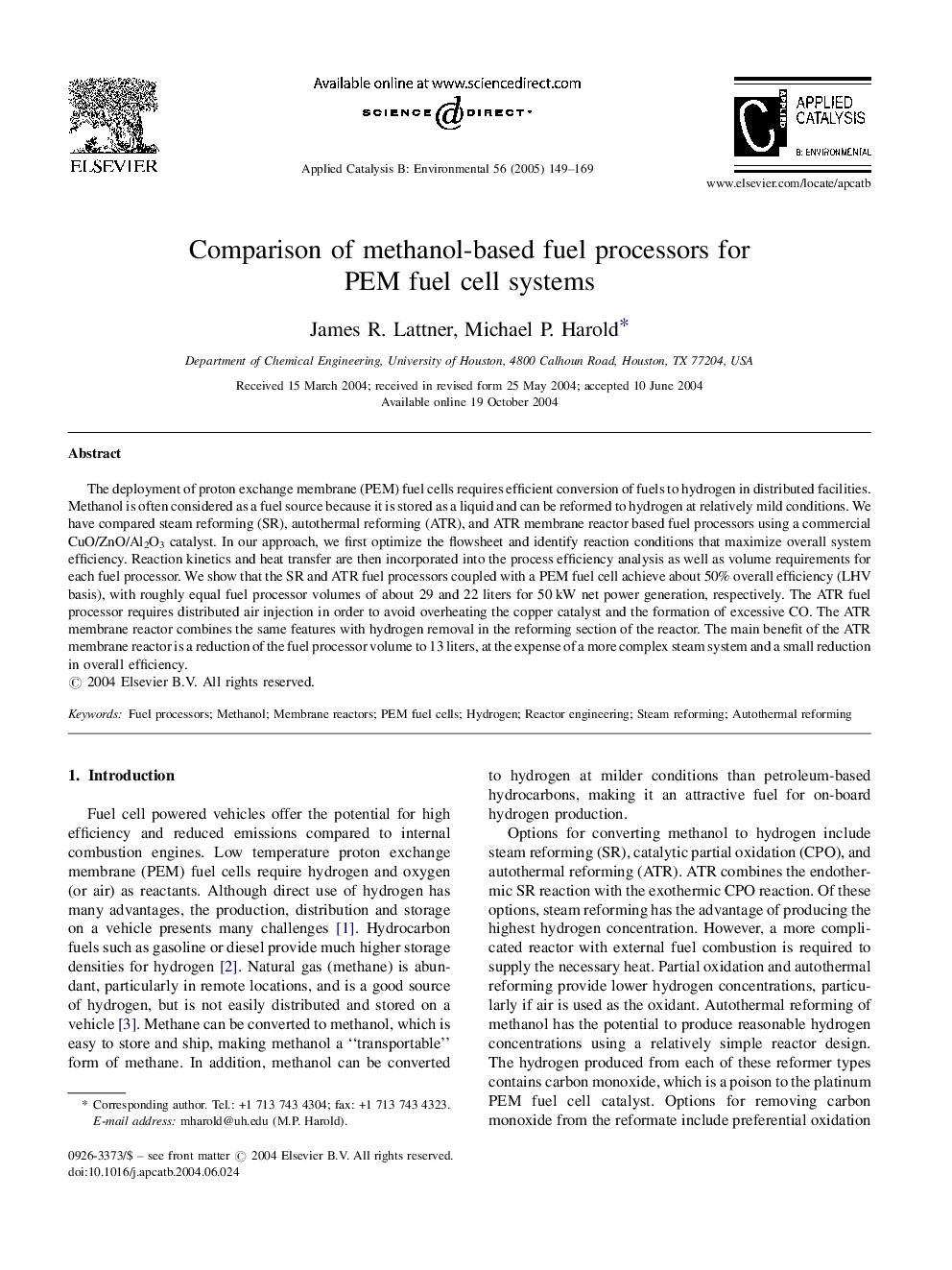| Article ID | Journal | Published Year | Pages | File Type |
|---|---|---|---|---|
| 9609942 | Applied Catalysis B: Environmental | 2005 | 21 Pages |
Abstract
The deployment of proton exchange membrane (PEM) fuel cells requires efficient conversion of fuels to hydrogen in distributed facilities. Methanol is often considered as a fuel source because it is stored as a liquid and can be reformed to hydrogen at relatively mild conditions. We have compared steam reforming (SR), autothermal reforming (ATR), and ATR membrane reactor based fuel processors using a commercial CuO/ZnO/Al2O3 catalyst. In our approach, we first optimize the flowsheet and identify reaction conditions that maximize overall system efficiency. Reaction kinetics and heat transfer are then incorporated into the process efficiency analysis as well as volume requirements for each fuel processor. We show that the SR and ATR fuel processors coupled with a PEM fuel cell achieve about 50% overall efficiency (LHV basis), with roughly equal fuel processor volumes of about 29 and 22 liters for 50Â kW net power generation, respectively. The ATR fuel processor requires distributed air injection in order to avoid overheating the copper catalyst and the formation of excessive CO. The ATR membrane reactor combines the same features with hydrogen removal in the reforming section of the reactor. The main benefit of the ATR membrane reactor is a reduction of the fuel processor volume to 13 liters, at the expense of a more complex steam system and a small reduction in overall efficiency.
Keywords
Related Topics
Physical Sciences and Engineering
Chemical Engineering
Catalysis
Authors
James R. Lattner, Michael P. Harold,
